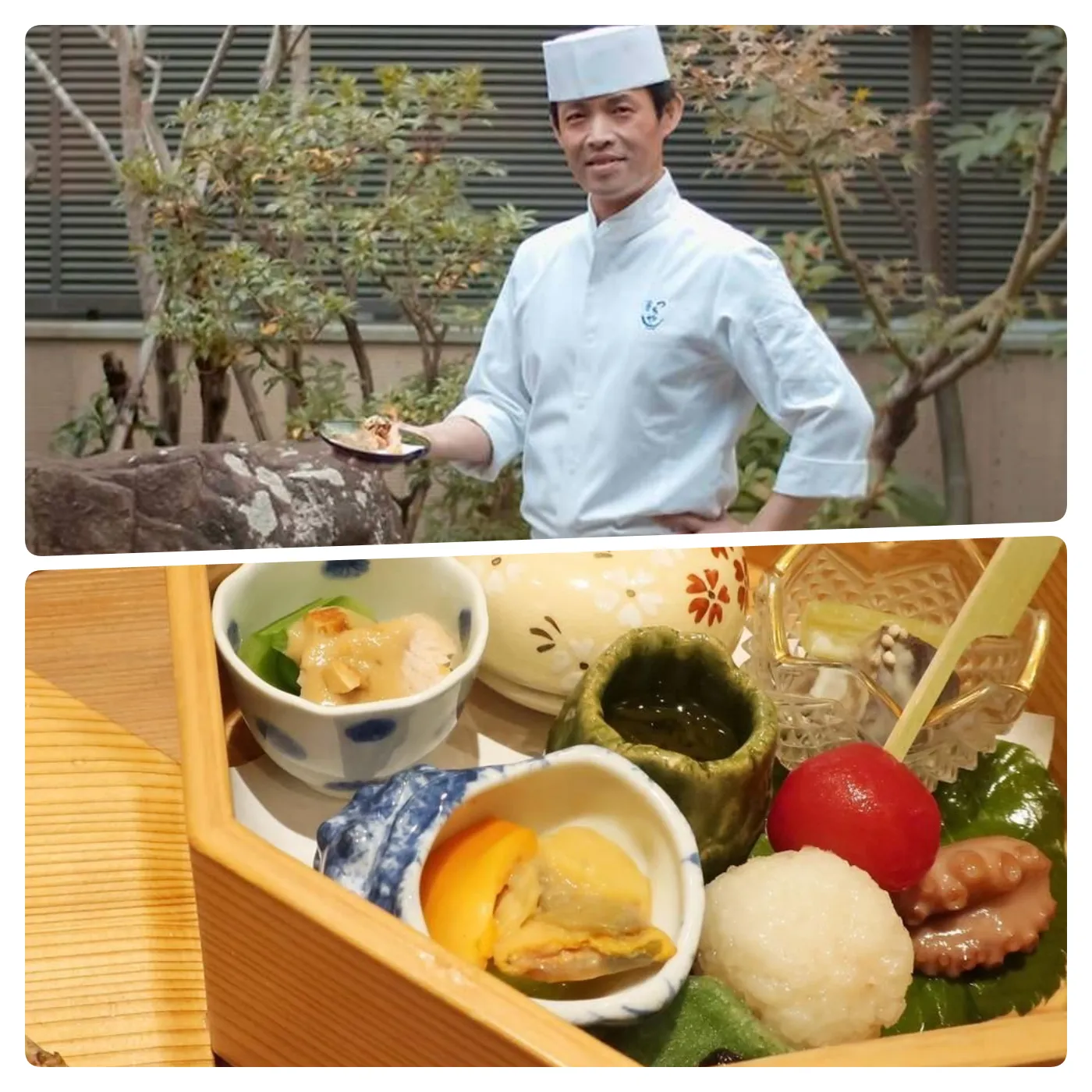
The secret behind chef Yukihiko Tsuchisaka’s mastery of Michelin-starred Tempura
Achieving culinary heights is no easy feat, but for Yukihiko Tsuchisaka, owner and head chef of the two-Michelin-star Shunsaiten Tsuchiya restaurant in Osaka, it is the result of perseverance, passion and character perfectionism. His story of masterful tempura making and winning two Michelin stars has won the hearts of food lovers around the world. With unparalleled dedication to his craft, Tsuchisaka has elevated tempura frying to an art form, using techniques far beyond the ordinary, including sensing the temperature of the oil with his body.
The humble beginnings of a culinary genius
Born in Shiga, Japan, Tsuchisaka faced opposition when he first expressed his desire to become a chef. His father, worried about the uncertain future of cooking, flatly rejected the idea and kicked him out of the house. Despite this defeat, Tsuchisaka’s determination never wavered. He was deeply inspired by a sushi chef’s precise knife skills while working at a seafood market. That’s when Tsuchisaka realized his calling was in the kitchen, where he could bring fresh ingredients to life through meticulous preparation.
Luckily, Tsuchisaka’s mother encouraged him to pursue his dream. After finishing high school, she supported his decision to enroll in the prestigious Tsuji Culinary Institute in Osaka. Reflecting on his father’s harsh words—“If you leave now, don’t ever come back”—Tsuchisaka now sees them as the driving force behind his relentless pursuit of success. Over time, his tenacity paid off, leading to the founding of Shunsaiten Tsuchiya, a revered destination for tempura lovers.

Tempura Craftsmanship: The Art of Balance and Precision
Tempura, characteristic of Japanese cuisine, has a simple appearance. But as chef Tsuchisaka explains, creating the perfect tempura requires a complex understanding of temperature, timing and ingredient balance. His Michelin stars did not come by accident; they are the result of years of practice and refinement. Tsuchisaka carefully selects seasonal ingredients and his menu changes based on what’s available at the market each day.
“Japanese cuisine allows us to experience each season,” Tsuchisaka said. “I design my menu around the delicate interplay between seasonal ingredients and the essence of tempura.”
An important aspect of Tsuchisaka’s tempura technique is the ability to gauge the temperature of the frying oil without using a thermometer. “As a tempura chef, you need to feel the temperature of the oil through your body,” he revealed. By mastering this unique method, he ensures that each piece of tempura is cooked to perfection—crispy on the outside while preserving the natural flavor and texture of the ingredients inside.
The Science of Tempura: Balancing Flavor and Texture
Tempura involves a complex chemical process. When ingredients are fried, they lose moisture but their natural sweetness (umami) and aroma are enhanced. However, if fried for too long, the umami flavor will decrease and the food will become dry. Tsuchisaka has mastered the balance between frying time and temperature, ensuring each dish retains moisture and flavor, giving diners a harmonious blend of crispiness and softness.
By frying food right in front of guests, Tsuchisaka adds a theatrical element to the dining experience. “When they eat, the taste of the oil, the flavor of the ingredients and the umami taste blend in their mouths,” he said. His interaction with diners goes beyond serving food; he aims to fully immerse them in the culinary experience.

“I think every guest is watching me. This kitchen counter is like a stage. I want them to see how I cook and enjoy the show,” he explains.
A deep connection to his constituents
Tsuchisaka’s commitment to quality goes beyond technique, it’s also about the ingredients he chooses. One of his favorites is a small fish called “smelly pond”, which comes from Lake Biwa near his hometown. “In winter, we catch this fish because it has a delicious taste. When fried like tempura, it looks like it’s swimming in the air. I find that fascinating,” he said. This deep connection to his roots and ingredients from his homeland adds a personal touch to his cuisine, further enhancing the dining experience.
Overcome obstacles to build a legacy
Despite initial challenges, Tsuchisaka’s perseverance helped him establish Shunsaiten Tsuchiya as a symbol of Japanese culinary excellence. Now, more than 12 years since its opening, the restaurant continues to maintain its prestigious Michelin star status. However, Tsuchisaka still focuses on quality rather than expansion.
“My principle is not to expand the business but to maintain a small scale and high quality business,” he explains. “I want customers to love this restaurant and to achieve that, I aim to continuously improve my skills.”
Tsuchisaka’s unwavering dedication to craft, attention to detail and deep respect for ingredients have made him one of Japan’s most respected chefs. By staying true to his principles and perfecting the art of tempura, he continues to delight diners with each meticulously prepared dish, ensuring that Shunsaiten Tsuchiya remains a culinary treasure in the heart of Osaka .






